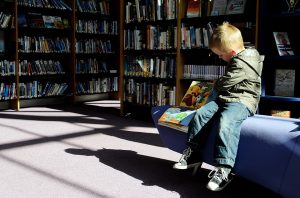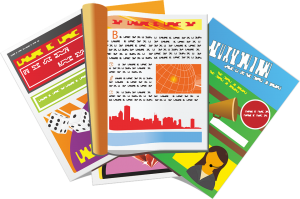Education, English, MY Classroom
Why Independent Reading is Critical & a Reading Resource for You!
Earlier this week, the NCTE (National Council of Teachers of English) released a statement on independent reading. Defined as a routine, protected instructional practice, occurring across all grade levels, independent reading is aimed at building habitual readers with conscious reading identities. Unfortunately, the authors note research by Lewis & Samuels (2002) showing, despite independent reading having significant impact on progress in reading, it is often replaced with other interventions.
Why is Independent Reading Essential?
To paraphrase the opening section of the statement would be to do it an injustice, so here it is reproduced in full, with some other key findings noted below.
“Independent reading leads to an increased volume of reading. The more one reads, the better one reads. The more one reads, the more knowledge of words and language one acquires. The more one reads, the more fluent one becomes as a reader. The more one reads, the easier it becomes to sustain the mental effort necessary to comprehend complex texts. The more one reads, the more one learns about the people and happenings of our world. This increased volume of reading is essential (Allington, 2014).”
- “Voluminous, pleasurable reading is key to literacy development,”according to Harvey & Ward (2017, 9), supporting the “development of reading comprehension ability, writing style, vocabulary, grammar, and spelling” (Krashen, 2004, p. 37).
- “Independent reading supports the development of reading stamina—the ability to sustain mental effort without scaffolds or adult support—that allows them to comprehend increasingly complex texts” (Hiebert, 2014).

How to Conduct Independent Reading Effectively
- Ensure there is dedicated time for independent reading on a daily basis.
- Promote reading as a positive and pleasurable activity that contributes to personal as well as academic development.
- Ensure library books represent a wide range of characters and experiences, such that students are enabled “to see their own experiences, the experiences of others, and the correlation between the two” (Sims Bishop, 1990). In this way, independent reading can be used to “build intercultural understanding” through literature (Short, 2009, p.2). Books can affirm lived experiences, which can be crucial for marginalised students who feel isolated. Equally, they can open their eyes up to ideas and opportunities they never thought existed. Books enable students to examine the world through the eyes of others, and this can promote the development of empathy or prompt an examination of personal views for which there may be a flawed basis.
- Such that it becomes a high-engagement activity, motivate students by affording them free choice as to the books and genres they select, ensuring there is a breadth of levels and types, so that books are accessible to all.
- Provide supports for students such that independent reading time does not cause any anxiety. This may be done through:
-
- Small-group or 1:1 support for students;
- The provision of accessible reading material;
- Modelling and conferencing such that the focus is on reading for pleasure and developing insight and understanding, rather than reading being mere preparation for a later activity or assessment task.
A Resource for You!
A potentially useful resource in terms of guiding your book picks came to my attention today. Booktime Magazine, a free online magazine, reviews some of the latest books to hit the shelves. There are book recommendations to suit various age groups and interests. I am not affiliated with the magazine but see much scope for using it in the classroom.
The current issue features interviews with Abi Elphinstone (‘Snow Dragon’), Michael Rosen (Michael Rosen’s Book of Play’), and Maggie Stiefvater (‘Call Down the Hawk’) which students of various ages may be interested in. There are also excerpts from Sally Gardner’s ‘Invisible in a Bright Light’ and Nevertell by Katharine Orton. As we know, independent reading, is not about additional tasks. These interviews and excerpts offer scope, however, for the development of reading comprehension and vocabulary development tasks to be done outside protected independent reading time.
Moreover, those of you with book-clubs running in your class or school may be interested in the Children’s Bookclub Review on page 19 of the magazine. Pupils keen to review books for the magazine can get in touch to express their interest. I suggest it is worth drawing the magazine and the Bookclub Review section to the attention of parents. Finally, the current issue also features a puzzle page with 10 questions to test bibliophiles and a competition to win the seasonal picture book, ‘The Tree That’s Meant to Be.’
The magazine affords pupils the opportunity to examine different forms of writing (e.g., book reviews, interviews, quizzes, recipes, snd a letter from the editor) and you may be interested in using these as the basis for a study of text features. Booktime Magazine is well laid out and features some lovely illustrations. As such, it may provide inspiration for a larger project such as the creation of a class magazine.
Image Source: Pixabay


